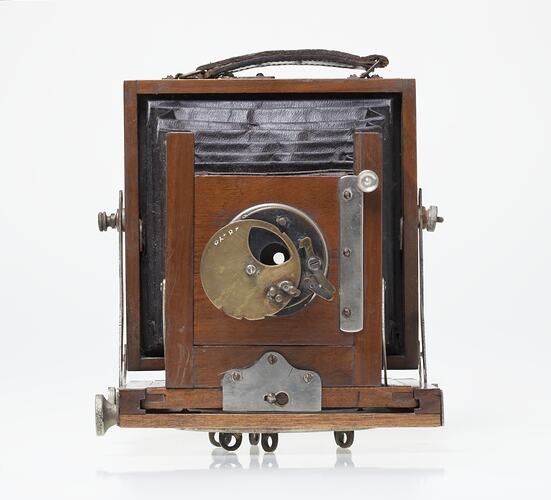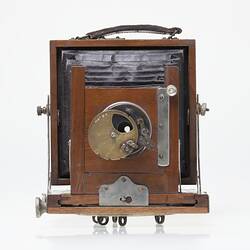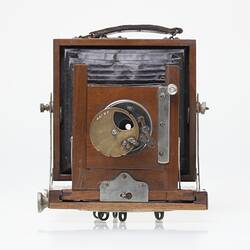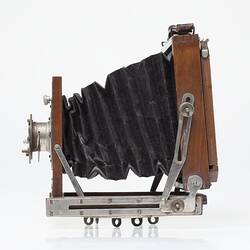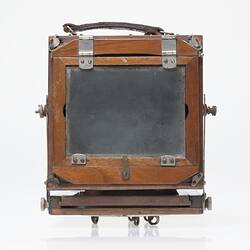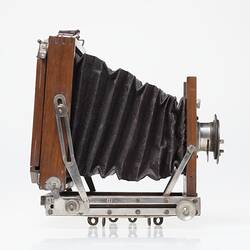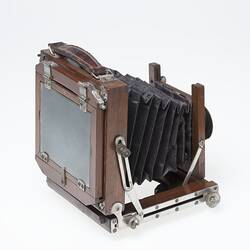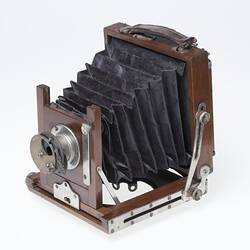Summary
View camera designed to take 8.2cm. x 10.7cm. glass plates, manufacturer unknown. The camera is similar to a Thornton- Pickard and might be an early Thornton-Pickard camera.
View cameras date back to the earliest days of photography and the invention of the daguerreotype and they are still made today, albeit greatly refined. The view camera consists of three essential parts: the front standard, the rear standard and the bellows in between the two. The front standard holds the lens in place. The rear standard holds a pane of ground glass onto which an inverted image of the subject matter is projected from the lens. The image viewed on the ground glass is identical to that of the final photograph, because, once the subject matter is focused, by the extension or contraction of the bellows, the ground glass is removed and replaced with a negative holder. The image is shot and the negative then developed.
The view camera depicted here is one of the simplest of its type and because of its simplicity, it takes us back to the origins of photography. The front standard is equipped with a meniscus lens and a simple, spring-operated shutter (spring missing). Aperture holes are punched into a rotary disc.
Physical Description
Wooden folding camera with metal attachments/fittings and black leather accordion bellows. Has fittings on base for tripod use.
More Information
-
Collecting Areas
-
Acquisition Information
Donation from Mr Frank Fleet, 25 Jul 1972
-
Date Manufactured
circa 1985
Manufacturer unknown. -
Classification
-
Category
-
Discipline
-
Type of item
-
Keywords
Cameras, Camera Accessories, Camera Lenses, Bellows, Leather Products
